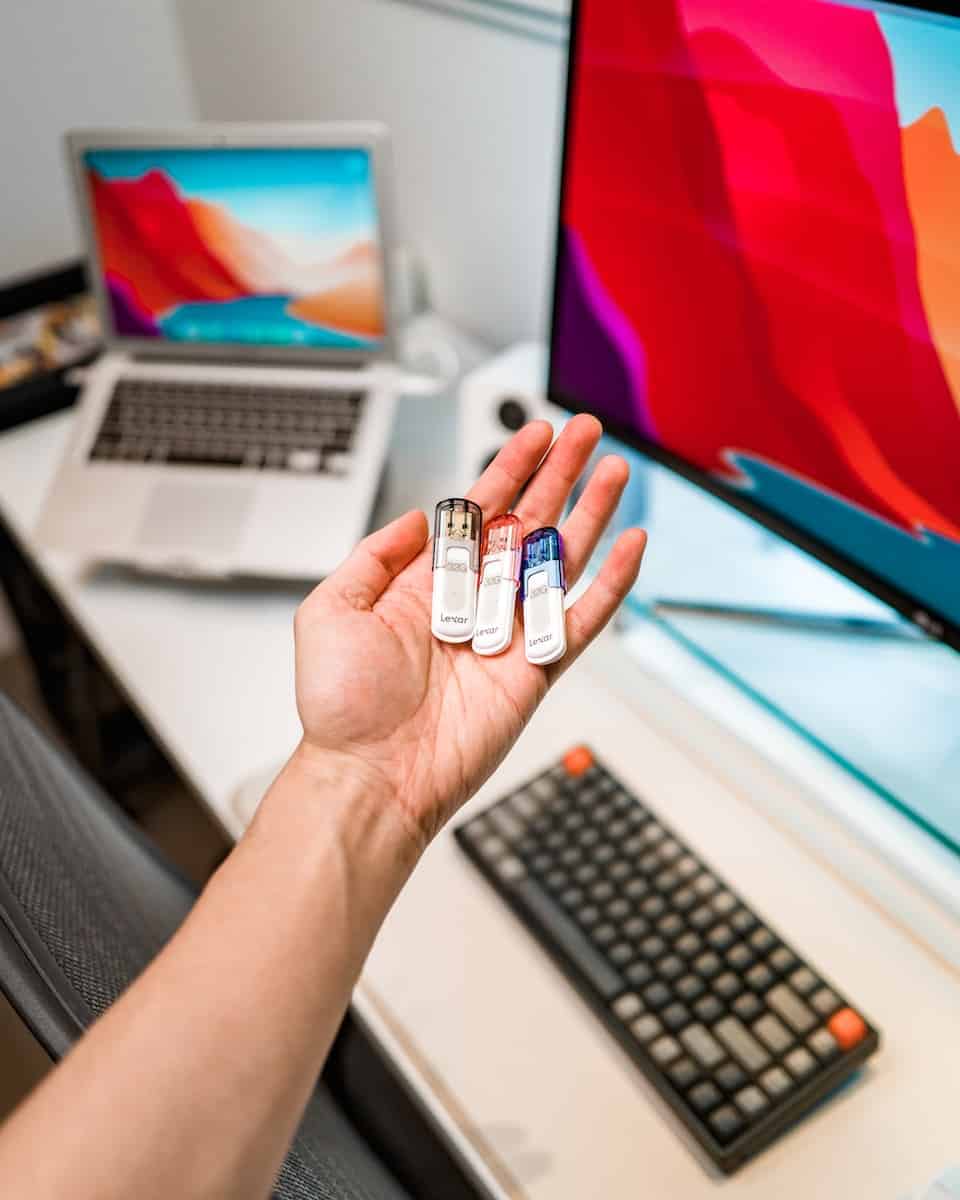Chromebooks are designed for simplicity and primarily run on Chrome OS. However, you can create a bootable Windows installation drive using a Chromebook. This can be particularly useful if you need to install Windows on another computer and only have your Chromebook available. Since Chromebooks do not natively support Windows software, creating a Windows installation media requires a different approach. Here are the steps to create a bootable Windows USB drive:
1. Download the Windows ISO File
- Find the official source: Go to the official Microsoft website and navigate to the Windows 10 or Windows 11 download page.
- Select the correct version: Choose the edition of Windows you need (Home, Pro, etc.) and the appropriate language.
- Download the ISO: Click the download button to save the ISO file to your Chromebook’s Downloads folder.
2. Prepare the USB Drive
- Choose the right drive: Use a USB drive with at least 8GB of storage. Make sure it’s empty or that you have backed up any important files on it.
- Format the drive:
- Open the Files app on your Chromebook.
- Right-click on your USB drive and select Format device.
- Choose FAT32 as the file system and give the drive a name (e.g., “Windows Install”).
- Click Format to erase the drive and prepare it for the Windows installation files.
3. Use the Chromebook Recovery Utility
- Install the extension: Go to the Chrome Web Store and install the “Chromebook Recovery Utility” extension.
- Rename the ISO file:
- In your Chromebook’s Files app, find the downloaded Windows ISO file.
- Rename the file extension from “.iso” to “.bin”. For example, rename “Win10_22H2_English_x64v1.iso” to “Win10_22H2_English_x64v1.bin”.
- Open the Recovery Utility:
- Click the three dots menu in your Chrome browser.
- Go to More tools > Extensions.
- Find the “Chromebook Recovery Utility” extension and click Details.
- Click Open app.
- Use a local image:
- In the Recovery Utility, click the gear icon in the top right corner.
- Select Use local image.
- Choose the “.bin” file you renamed earlier.
- Select the USB drive:
- Insert your USB drive into your Chromebook.
- Select the USB drive from the list in the Recovery Utility.
- Create the bootable drive:
- Click Create now and wait for the process to complete. This may take some time.
4. You’re Done!
Once the process is finished, you’ll have a bootable Windows installation drive that you can use to install Windows on another computer.
Important Notes:
- This method uses a workaround to make the Chromebook Recovery Utility think it’s creating a Chromebook recovery image.
- Make sure you have a valid Windows product key to activate Windows during the installation process.
- Be aware that installing Windows on a non-compatible device can lead to issues. Make sure to check the system requirements for the version of Windows you are installing.
This table summarizes the key steps:
| Step | Description |
|---|---|
| Download ISO | Download the Windows ISO file from the official Microsoft website. |
| Format Drive | Format a USB drive with at least 8GB of storage as FAT32. |
| Rename ISO | Rename the “.iso” file extension to “.bin”. |
| Recovery Utility | Use the Chromebook Recovery Utility to create a recovery image from the “.bin” file. |
| Select Drive | Choose the USB drive as the target for the recovery image. |
| Create Bootable Drive | Start the process and wait for it to complete. |
Tools and Steps for Turning Your Chromebook into a Windows Installer
Chromebooks are great, but sometimes you need the full power of a Windows PC. That’s why knowing how to create a bootable Windows installation drive on your Chromebook is so handy. Here’s what you need and how to do it:
Materials Needed
- Chromebook: Ensure it has at least 8GB of free space.
- USB drive: Minimum 8GB capacity. All data on it will be erased!
- Windows 10/11 ISO: You can download this from Microsoft’s website. (https://www.microsoft.com/en-us/software-download/windows10ISO)
- Chrome Recovery Utility: This is a Chrome extension. Install it from the Chrome Web Store.
The Process
- Rename ISO: Rename the downloaded ISO file from something like ‘Win10_22H2_English_x64.iso’ to ‘Win10_22H2_English_x64.bin’
- Open Chrome Recovery Utility: Find it in your Chromebook’s app launcher.
- Click the gear icon: In the top-right corner, click the gear icon and choose “Use local image”.
- Find Your File: Select the renamed Windows ISO (now .bin) file.
- Select USB Drive: Insert your USB drive and select it in the utility.
- WARNING!: This will erase your USB drive! Double-check you’ve selected the right one.
- Click ‘Create Now’: The process will begin. This might take some time.
Using Your Bootable Drive
Once complete, you have a bootable Windows installation drive! To use it:
- PC Setup: Insert the USB into the PC you want to install Windows on.
- BIOS/Boot Menu: While the PC starts up, access the BIOS or boot menu (the key to press varies by PC. Usually, it’s F12, F2, or Delete).
- Select USB Drive: Choose your USB drive as the boot device.
- Install Windows: Follow the on-screen Windows installation instructions.
Important Note: Chromebooks are not officially supported for creating Windows boot drives. This process usually works, but keep in mind that there may be occasional glitches.
Key Takeaways
- You can create a Windows bootable USB drive on a Chromebook despite different operating systems.
- A USB drive with enough space and a Windows ISO file are essential for the bootable media creation.
- Specific tools are needed to make the USB drive bootable and to transfer the Windows installation files onto it.
Preparing Your Chromebook
Before embarking on creating a bootable Windows USB drive, it’s crucial to prepare your Chromebook by enabling Developer Mode and setting up the Linux environment. These steps will ensure that your device can handle the bootable USB drive creation process.
Enabling Developer Mode
To start, you need to enable Developer Mode on your Chromebook. This mode allows you to access more advanced features of the device. But be careful, as this will erase all your data on the Chromebook. Here’s how to enable it:
- Ensure your Chromebook is powered off.
- Press and hold the
Esc+Refreshkeys, then press thePowerbutton. - When the device starts, release the
Powerbutton but keep holding the other keys until you see a recovery screen. - Press
Ctrl + Dto turn on Developer Mode. - You might need to disable write protect by removing a physical screw on the motherboard called the write protect screw.
Once Developer Mode is enabled, your Chromebook will reboot, and you’ll need to set it up again.
Setting Up Linux Environment
After enabling Developer Mode, the next step is setting up a Linux shell environment on your Chromebook. This will allow you to use Linux commands to create a bootable USB drive. Here’s a simple way to get Linux up and running:
- Open the Chromebook settings.
- Look for the
Linux (Beta)option and turn it on. - Follow the on-screen instructions to complete the installation.
- Once installed, you can access the Linux terminal from your apps.
Your Chromebook is now ready, and you should have all you need to create a bootable USB drive for Windows installation.
Creating The Bootable Windows USB
To create a bootable USB drive for Windows installation using a Chromebook, follow these specifics steps. The process involves obtaining the right software, preparing the drive, and ensuring the proper settings are in place.
Downloading Windows ISO
Obtain the Windows ISO file from the official Microsoft website. Choose the correct version of Windows for the target PC’s system requirements. Check for a stable internet connection before starting the download to prevent any interruptions.
Using Chromebook Recovery Utility
The Chromebook Recovery Utility is an app you can use to format your USB drive. When you open it, select the gear icon for settings. Choose the option to use a local image. Locate the downloaded Windows ISO file to proceed.
Transferring Installation Files
Once the USB drive is formatted, it’s time to transfer the installation files. The Chromebook Recovery Utility will help you write the Windows ISO to the USB drive. This makes the USB bootable. Make sure to transfer all necessary Windows and hardware drivers.
Finalizing The Boot Process
After transferring the files, safely eject the USB drive from your Chromebook. Insert it into a compatible computer. Restart the computer and enter the BIOS or UEFI firmware settings. Select the USB as the boot device. Follow on-screen instructions to complete the Windows installation. If needed, have the product key ready.
Frequently Asked Questions
Can I create a Windows 10 installation USB stick using a Chromebook?
Yes, you can make a Windows 10 bootable USB from a Chromebook. This requires downloading a Windows 10 ISO and correctly transferring it to a USB.
What steps are involved in burning a Windows ISO to a USB drive on a Chromebook?
The steps include downloading the Windows ISO file, formatting the USB drive, and then using special software to copy the ISO onto the USB drive to make it bootable.
Is it possible to use the Chromebook Recovery Utility to make a bootable Windows USB?
No, the Chromebook Recovery Utility cannot create a bootable Windows USB. It is designed for restoring Chrome OS.
Without using Rufus, how can I make a bootable Windows USB on a Chromebook?
To create a bootable USB without Rufus, you’ll need alternative software compatible with Chrome OS that can perform the same task.
How to use the Windows 10 Media Creation Tool with a Chromebook?
Since the Media Creation Tool is an executable file for Windows systems, it cannot be used directly on a Chromebook. Users need to use a different method to create a bootable USB stick.
Can Chrome OS be replaced with Windows using a bootable USB made on a Chromebook?
Creating a bootable Windows USB stick on a Chromebook can be the first step in replacing Chrome OS with Windows, but this process depends on hardware compatibility and may not be straightforward for every Chromebook.







